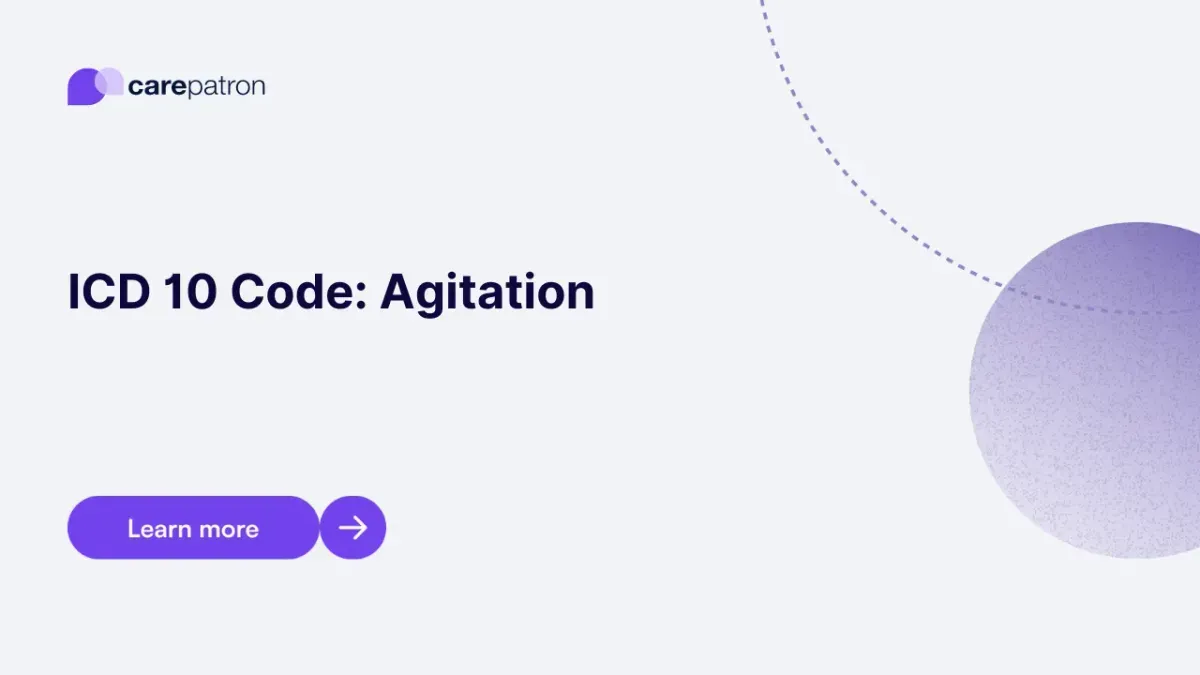
Agitation ICD-10-CM Codes | 2025
Learn about the agitation ICD-10-CM codes that you can use through this guide.
Use Code
Commonly asked questions
When a patient presents with restlessness, unease, or increased tension, that affects their daily functioning or safety.
Treatments can range from behavioral interventions to psychotherapy to medications, depending on the underlying cause.
A diagnosis code for agitation refers to a classification used by healthcare professionals to identify and document episodes of increased restlessness, irritability, or heightened emotional responses in patients. This code helps in diagnosing underlying conditions, such as anxiety disorders, mood disorders, or neurological issues, facilitating appropriate treatment and management strategies.
EHR and practice management software
Get started for free
*No credit card required
Free
$0/usd
Unlimited clients
Telehealth
1GB of storage
Client portal text
Automated billing and online payments
